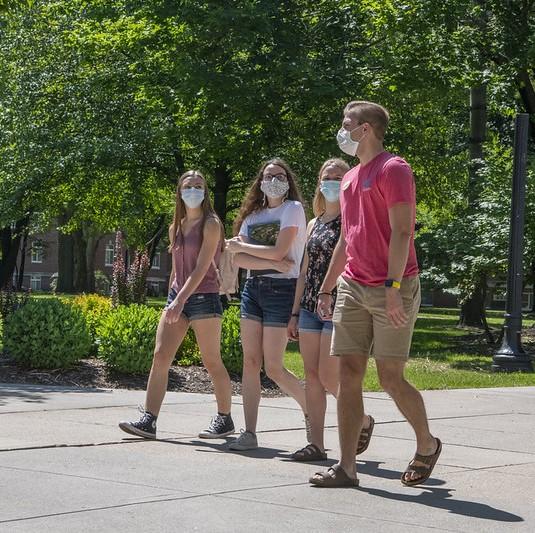New COVID-19 cases in Texas, Arizona, and Florida—the main drivers of a summer surge of coronavirus infections in the United States—appear to be leveling off. In all three states, the 7-day average of newly reported cases has dropped, according to an analysis by CNBC.
Arizona has seen a 13% decrease in its 7-day average, Florida an 8% decrease, and Texas a 19% decrease. Hospitalizations are also starting to drop or level off, but daily fatalities remain in the triple digits in both Texas and Florida.
Today, Florida reported 191 fatalities and 9,230 new cases, bringing that state’s total to 440,000. According to Reuters, Florida now has the second-most COVID-19 cases in the country, after California. Florida had previously reached a record-high average of daily new cases of 11,870 on Jul 17.
Yesterday on "Fox and Friends," Secretary of Health and Human Services Alex Azar, JD, said the drop in cases in hot spots was due to citizens taking the coronavirus seriously. "They’re wearing their masks. They’re social distancing. They’re engaging in good personal hygiene," he said.
Texas has enacted a statewide mask mandate, but governors in Arizona and Florida have not, instead letting mayors and county officials issue their own mandates at will.
Birx warns Tennessee to close bars
But as cases drop in major hot spots, virus activity is picking up in Kentucky and Tennessee, according to White House coronavirus task force leader Deborah Birx, MD.
Yesterday, Birx recommended that Tennessee Governor Bill Lee close the state's bars and indoor restaurants due to increasing positivity rates throughout the state. Lee said he has no plans to do so, according to The Tennessean.
"Beyond the regions that currently have restrictions, that's not a plan for us now," Lee said in a press conference yesterday. "I’ve said from the very beginning of this pandemic that there’s nothing off the table. I’ve also said that we are not going to close the economy back down, and we are not going to. But I appreciate their recommendations, and we take them seriously.”
In total, the US has 4,309,230 cases and 148,298 deaths, according to the tracker maintained by Johns Hopkins University.
Many of those cases are coming from what the White House task force calls "red zones," states with more than 100 new cases per 100,000 people, in the past week. Those states now include Alabama, Arizona, Arkansas, California, Florida, Georgia, Idaho, Iowa, Kansas, Louisiana, Mississippi, Missouri, Nevada, North Carolina, North Dakota, Oklahoma, South Carolina, Tennessee, Texas, Utah, and Wisconsin, according to a task force report obtained by the New York Times.
Missouri, North Dakota, and Wisconsin are the three states added since the Jul 14 report. Vermont is the only state in the "green zone" category for cases, with fewer than 10 cases a week per 100,000 people.
Today on "Good Morning America," Anthony Fauci, MD, director of the National Institute of Allergy and Infectious Diseases, warned the Midwest could be the next hot spot and said Ohio, Indiana, Tennessee, and Kentucky are all showing early signs of an impending surge.
Healthcare workers face job losses
A new report from Kaiser Health News shows that dental and doctors’ offices are still struggling with COVID-19 job losses 5 months into the pandemic. Though the sector has seen some job recovery in recent weeks, employment in medical outpatient care fell by about 1.3 million jobs, or 17%, from February to April, and in June also remained 7% below pre-crisis levels nationwide.
The job losses are worse in the dental industry; nationwide, dental employment fell by about 546,000 from February to April, a 56% decline.
In related news, the Infectious Disease Society of America (IDSA) published yesterday in Clinical Infectious Diseases new guidelines for healthcare personnel on how to care for patients with known or suspected COVID-19 infections. The recommendations address eight specific questions on the use of personal protective equipment (PPE).
N95 respirators are reserved for aerosol-generating procedures in conventional settings and in crisis and contingency settings, in which repurposed N95s are also allowed. In non-aerosolizing procedures, surgical masks and face shields are recommended.
"Use of masks or respirators must be in conjunction with other recommended PPE and appropriate hand hygiene," the report said. "Because of the risk of serious harm, the panel recommends that health care personnel not be exposed to suspected or confirmed COVID-19 patients without a mask or respirator."




















